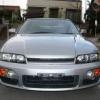R33 Coupe Or R34 Sedan
Announcements
-
Similar Content
-
Latest Posts
-
Yeah it is wild how much wider the Yokohama A050 in 255/40R17 vs Yokohama AD09 in 255/40R17 sits on the 17x9 +22 considering its even from the same brand and adjacent product family
-
Would love to see some examples of WMI making the same as E85. Only thing I've ever found is this one. Which suggests WMI is not worth much at all.
-
And now the washer bottle looks like an orphan. You're going to have to spend money on a wrinkle black painted fabbed ally one of those. Oh, and the brake MC res. That won't look any good after you've gotten rid of the washer bottle. You going to need to go back to work to keep up with this?
-
You're going to need all that and more to keep them from rubbing at the rear anyway, is my guess.
-







Recommended Posts
Create an account or sign in to comment
You need to be a member in order to leave a comment
Create an account
Sign up for a new account in our community. It's easy!
Register a new accountSign in
Already have an account? Sign in here.
Sign In Now